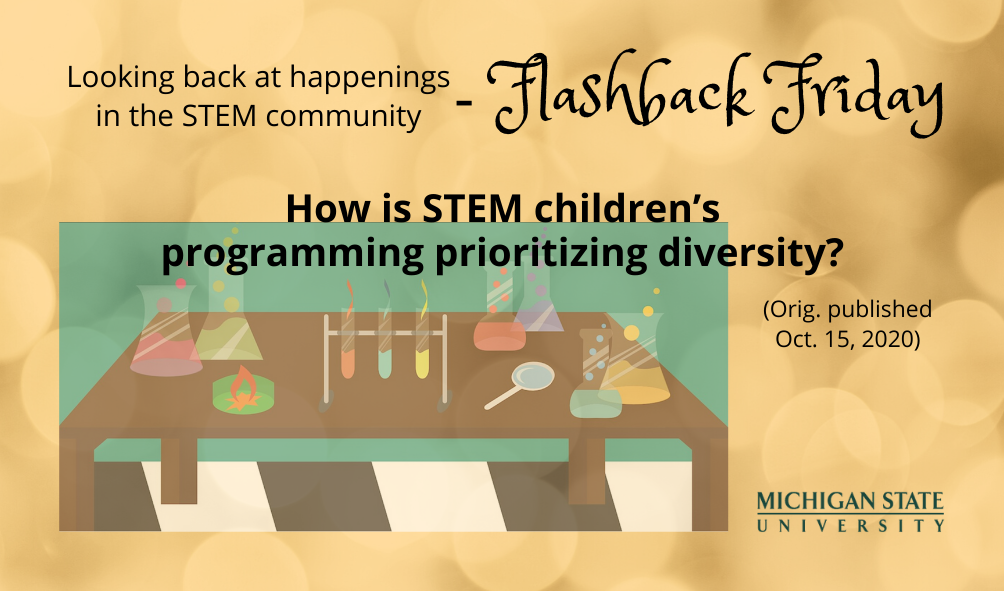(originally published Oct. 15, 2020, in MSU Today)
Children’s television programming not only shapes opinions and preferences, but its characters can also have positive or negative impacts on childhood aspiration, says a new study from Michigan State University.
The study is the first large-scale analysis of characters featured in science, technology, engineering, and math-related educational programming. It was published in the fall 2020 edition of the Journal of Children and Media. Results revealed that of the characters appearing in STEM television programming for kids ages 3 to 6, Latinx and females are left behind.
“Children soak up subtleties and are learning and taking cues from everything; by age 5, you can see that they understand implicit biases,” said Fashina Aladé, lead author of the study and assistant professor in the College of Communication Arts and Sciences. “With the recent proliferation of STEM television over the past five years or so, I wanted to see who was showing kids how to solve problems, who is teaching STEM foundations, and who is modeling what it looks like to engage in STEM.”
Read the entire article here.


